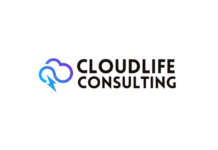Subram Natarajan, Chief Technology Officer of IBM India/South Asia, said Subram Natarajan, Chief Technology Officer, IBM India/South Asia, not only will companies continue to concentrate on ensuring that they make the right technology choices, they will follow a comprehensive, hybrid multi-cloud architecture that helps them to effectively develop and modernise applications and make their data ready for their path to AI across the company.
New Delhi: While 2020 saw an increase in the implementation of Hybrid Cloud, enabling enterprises to run workloads on-site, in the private cloud and in the public cloud, six primary technology goals for companies of all sizes to implement in the country will be established next year, key IBM executives said on Sunday.
Subram Natarajan, Chief Technology Officer of IBM India/South Asia, said Subram Natarajan, Chief Technology Officer, IBM India/South Asia, not only will companies continue to concentrate on ensuring that they make the right technology choices, they will follow a comprehensive, hybrid multi-cloud architecture that helps them to effectively develop and modernise applications and make their data ready for their path to AI across the sector.
“The next chapter of the cloud demands the power to quickly innovate and respond to changing market and client demands- build once and deploy anywhere. With cloud investment being key, we will witness six major technology priorities enabled by cloud in 2021,” Natarajan told IANS.
A recent IBM report has shown that companies in India will increase their share of spending on Hybrid Cloud from the current 17 per cent to about 49 per cent by 2023.
Indian companies are projected to use an average of 10 clouds, but only 29 per cent of enterprises will have robust multi-cloud management strategies in place by 2023.
When Cloud migration projects becoming more and more mainstream, the IT teams of customers will have a strong push to standardise technology enablers.
“Particularly, container platform decisions will become the focus and customers will look for flexibility, security, openness, and agility as the main criteria for this decision,” Natarajan said.
The second goal would be to allow the path to Cloud with industrial lenses, addressing roadblocks in terms of protection, compliance and regulatory requirements.
“Particularly, in the case of financial services and telco which have extensive regulatory controls that are mandated, this becomes relevant,” the IBM CTO added.
The third is edge and satellite computing.
Since the technology is about getting computation closer to where data is produced, it is more attractive to industrial customers who are looking to get IT and Operational Technology (OT) closer, exploiting fast and future rich networking such as 5G but not losing sight of being cloud natives.
The fourth pillar is smart automation to go mainstream.
“Segments like retail, banking, telco, the government will drive up the usage of intelligent automation”
The strengthening of the core security wall would be the fifth priority for companies.
“Leveraging cloud-based security solutions to establish a common control pane for handling threats and security across the organisation will become a reality. The need is driven more from the WFH situation and the increased surface area of attack,” Natarajan said.
In addition, the implementation of AI would see a rise in mainstream IT operations to help forecast outages and promote timely resolution of issues.
“The retail and government segment will stand to gain most from the rapid acceleration of AI adoption into mainstream functions,” he said to IANS.






